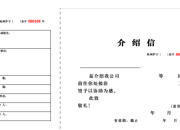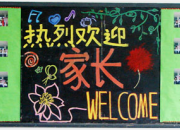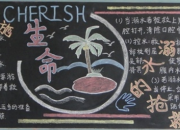初中全英说课稿
时间:2021-08-31初中全英说课稿1
Good morning, everyone!
Today, I’ll say something about Unit 9 Part A in Book 4 of Oxford English.
Background on the reformation of curriculum, this book can connect the life and act, emphasize the interest and experience of the Ss, the pictures are active and vivid. Grade four is the initial stage of English learning, so it stresses on the emotion of the Ss, creates a well beginning for the Ss.
This Unit has 7 parts, we’ll learn Part A mainly, it embodies the repeating characterize. Review the learned language points "Where’s…"and the new language points will be represented in the following units. So this unit forms connecting links with a special meaning in this book.
The content of this period is to use "Where’sare…" to determine the place. And according to the contents and the fact of the Ss, I establish the following three teaching aims of this period:
The first one: students can listen, read, say and spell the following words: a glass, a fridge, an egg, bread and a table.
The second one: students can listen, read, say and write the following daily expressions: What’s for breakfast?
Have some juice then.
The third one: students can listen, read, say and write the following sentence patterns: Where’sWhere are themy…
It’s They’re…
There’s no …in on ear…
I think the most difficult point of this period is to make sure the students can use the patterns "Where’sWhere are…and There is no …inon ear…" in their daily life correctly.
And I will use some pictures, words and sentence cards, a tape recorder and the multi-media computer to help me achieve the aims.
The task-based method, communicated method, group cooperate method will be used in this period.
To accomplish the aims, I design the following steps:
Step 1 Songs and the game arousers the emotion.
In order to attract the Ss’ attention and construct an atmosphere of learning English, I let the students sing some English songs and play the game "Simon says". At the same time the game can review the prep, serve the knowledge as foil and consist the appearance of the knowledge.
Step 2 Change class to life, happy to say.
The substance of language is communication and the environment of communication is life. So when I present the sentence pattern "What’s for breakfast?" I first show a clock to elicit the time for breakfast, teach the sentence.
Then show my own photo of having breakfast, Ss ask and guess. In this way I can attract Ss’ attention, encourage Ss to ask Qs with the new knowledge.
Most of the Ss have learnt the sentence pattern: Where’s…? so I design a task for Ss to help Helen find the food and drinks for breakfast, and teach the new language points: Where are…? They’re … Meanwhile stick the sentences on the Bb.
After some practice by asking and answering, I present the next language points:
There’s no …inon ear…
Have …then.
And I will stick these sentence patterns on the Bb. Finally I’ll let the Ss do pair works to consolidate them.
Step 3 Listen to the tape and Ss imitate to read and say.
As the new reformation of curriculum, emphasized the traditional class attach importance to the mechanical teaching, neglect the experience and participation, for example, the five-step method. So in this lesson, after presentation, I ask Ss to listen to the tape with three Qs, read in different roles and in pairs, then try to recite the text.
Step 4 Ss be the main body, T makes a guider.
In class, Ss play as a host, and the T makes an influence on guiding, help Ss to act the learnt dialogue, it can stress the position of the Ss, and arouse their interest.
Then I show a carton with no voice, ask Ss to make a dialogue in pairs.
There are lots of ways to consolidate the new knowledge.
Playing game is a good way. So according to the physiology of Ss, I hold a group competition during the game, ask Ss to finish the blanks. In this way can develop Ss’ good habits and achieve the aim of mastering the learned knowledge in situation.
Step 5 Change class to life, learn by themselves.
Is this the end of the class? I don’t think so. If there is an end, I think it should be in the life. So I extend this class, encourage Ss to use the learned to communicate with each other in their life.
In a word, the whole period is based on tasks, which are designed from easy steps to steps that are challenging. When the Ss are carting out the tasks, they can acquire information, knowledge, and have their ability and skills trained.
That’s all. Thanks a lot for your attention.
初中全英说课稿2
Interpretation
Good morning, ladies and gentlemen. It’s my great honor and pleasure to be here sharing my lesson with you.
I have been ready to begin this representation with five parts.
Analysis of the teaching material, the teaching aims, the important and difficult points, the studying methods, and the teaching procedure.
Part 1 Teaching Material
The content of my lesson is New Senior English for China Book*** Unit********************. This unit is about******************** (topics)。 By studying of this unit, we’ll enable students to know************************* and develop the interest in*******************. At the same time, let the students learn how to******************** (functional items)。 From this lesson, it starts***************************(structures)。 (As we all know, reading belongs to the input during the process of the language learning. The input has great effect on output, such as speaking and writing.) Therefore, this lesson is in the important position of this unit. If the Ss can master it well, it will be helpful for them to learn the rest of this unit.
Part 2 Teaching Aims
According to the new standard curriculum and the syllabus (新课程标准和教学大纲), and after studying the teaching material, the teaching aims are the followings:
1.Knowledge objects (语言目标:语音,词汇,语法,功能,话题)
(1)The Ss can master the usage of the important words and expressions.
(2)The Ss can use the ****************** (grammar) in the proper situation.
(3)The Ss can understand the content of the lesson, talk about *********************** (information) and get their own idea about *******************************.
2.Ability objects (技能目标:听,说,读,写)
(1) To develop the Ss’ abilities of listening, speaking, reading and writing
(2) To guide Ss to set up effective studying strategies.
(3) To improve the student’s reading ability, especially their skimming and scanning ability.
(4) To train the Ss’ abilities of studying by themselves and cooperating .
3.Emotion or moral objects (情感目标:兴趣,自信,合作,爱国,国际视野)
(1)By completing the task, the Ss increase their interest in ********************and set up self-confidence in *********************.
(2)Teach the Ss*************************, put the moral education in the language study.
Part 3 the Important and Difficult Points
Based on the requirement of the syllabus.
The important points are************************** such as **************.
The difficult points are************************* for example*************.
Part 4 Teaching Methods
As is known to us all, a good teaching method requires that the teacher should help Ss develop good sense of the English language.
For achieving these teaching aims, (after the analysis of the teaching material and teaching aims,) I will use the following methods according to the modern social communication teaching theories(现代社会交际教学理论) .
1. Communicative Approach(交际教学法)
2. Whole Language Teaching(整体语言教学法)
3. Task-based Language Teaching (任务教学法)
4. Total Situational Action (情景教学) a "scene — activity" teaching method , it establishes a real scene and the interaction between the teacher and the Ss. At the same time, CAI (电脑辅助教学) can provide a real situation with its sound and picture, it can develop the Ss creativity in learning English.
Part 5 Teaching Procedure
Step 1. Lead-in. (*****min)
*******************************************************************
Purpose of my design: (1) to catch Ss’ attention about the class/topic/passage.
(2) To set up suspense/develop interest in ***************.
Step 2. Pre-reading
Task 1. (Individual work, pair work, group work, class work; *****min)
Let Ss *************************************************************
Task 2. (Individual work, pair work, group work, class work; *****min)
*******************************************************************
Now, let’s see what happened to the***************/ let’s check whether it is right or not.
Purpose of my design: (1) to get to know something about the *****************.
(2) To have a better understanding about the importance of *******************.
Step 3. While-reading
Task 1. (Individual work, pair work, group work, class work; *****min)
Skimming: Ss should read the material fast to find out the main idea/topic sentence for each paragraph.
Para 1 *******************
Para 2 *******************
Para 3 *******************
…
Task 2. (Individual work, pair work, group work, class work; *****min)
Scanning: Listen to the tape part by part to finish ***************************.
Task 3. (Individual work, pair work, group work, class work; *****min)
Scanning: Guide Ss to read the material carefully and take some important notes, then answer the following questions.
Task 4. (Individual work, pair work, group work, class work; *****min)
Scanning: Ask Ss to read the material carefully and find out the correct answers to finish the following chart.
Purpose of my design: Enable students to understand the given material better by using different reading skills. And proper competition can arouse the Ss’ interest in English learning. "Task-based" teaching method is used here to develop the Ss’ ability of communication and also their ability of co-operation will be well trained.
Step 4. Post-reading
Task 1. (Individual work, pair work, group work, class work; *****min)
(接task3)Ask Ss to close books and finish the summary according their notes.
(接task4)Retell the story /Sum up the passage in Ss’ own words according to the chart.
Task 2. (Individual work, pair work, group work, class work; *****min)
Discuss ***********************************************with other group members and then choose a reporter to share their opinions about ************************************ with the whole class.
Purpose of my design: I think If the Ss can finish this task well, they will benefit a lot in their spoken English. Most Ss can take their parts in the activities, especially for the Ss who have trouble in English study.
Step 5. Homework
1. **************************************************
2. **************************************************
Purpose of my design: Homework is so important and necessary for to master the knowledge they learned after class. It will check whether the Ss achieve the teaching aims.
【初中全英说课稿】相关文章:
2.高中全英说课稿
3.英语全英说课稿
4.关于全英的说课稿
5.全英语说课稿参考
6.英语课全英说课稿











